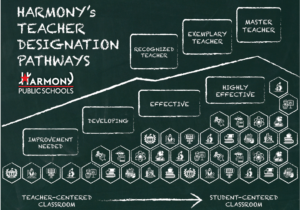Edu-innovation requires investment and incentives
On Monday I attended an education technology conference—a few hundred people reviewing very simple education tools. On Wednesday I attended a military learning technology conference (I/ITSEC)—16,000 people experiencing sophisticated and realistic simulations of flying a fighter, piloting a battleship, and patrolling a village. US education and defense budgets are roughly the same size, but the Department of Defense spends 15 times as much on research and development and in a much more focused way. The DOD is a much better and more efficient learning system than the distributed K-12 ‘system.’
Retired Vice Admiral Al Harms, who led the learning revolution in the Navy, was the star participant on an education panel. Harms described how the US is slipping in international academic ranking and noted the unsettling implications of what will soon be a billion middle class citizens in India and China consuming education and energy at increasing rates.
Richard Boyd, from Lockheed’s virtual world lab, discussed the use of simulations in building ‘rapid pathways to mastery’ in military, medical, retail, and transportation applications. He is confident that virtual worlds, simulations, and learning games will allow young people to learn more, faster, and cheaper than ever before.
I left the Orlando conference with three observations:
- If desired competencies can be clearly identified, it’s possible to build learning experiences and assessment systems to develop and certify them.
- If improvement incentives exist for the system and participants, both will invest in seeking the most efficient path to mastery.
- Innovation diffusion occurs within well-managed organizations and/or healthy markets.
How do these observations square with US K-12? States flocking to the Common Core may mark progress on desired outcomes but the endless debate on ends will likely continue—‘what graduates should know and be able to do’ won’t ever be as simple as learning to drive a tank. Improvement incentives remain weak for schools and some students, but the upcoming reauthorization of major federal education bills is an opportunity to improve both carrots and sticks. Some innovation diffusion occurs across well-managed networks and districts but the fragmented sector remains highly inefficient.
Many at the military conference, including Admiral Harms, thought the most important national security issue was not the technology displayed at the conference but what happens in American classrooms over the next 10 years. Unless the sector, beginning with the Department of Education, embraces the private sector, creates a substantial and focused R&D agenda and encourages private investment, US education won’t make much improvement and we won’t learn all that we could from the world’s best military (and learning organization).







Richard Boyd
Thanks for attending the conference and the "Moonshot for Education" special event. With your help, I believe we have successfully framed our education crisis as more than just an unfortunate trend, but as a national security and economic imperative. In an accelerating information age, having an educated population who "think like scientists, mathematicians and historians"; who can think critically and collaboratively problem solve and separate the signal from the noise are requisite for survival.
The US still far exceeds any other single country in GDP and will so for some time. I believe no single nation or loose band of malcontents can defeat us or exceed us economically in the next two decades; but we are more than capable of defeating ourselves by taking our eye off the ball. Economic growth derives from innovation. Innovation comes only from vigilant R&D. As you point out, it is sorely lacking in our education system.
The gauntlet is thrown. Will our administration, school boards, teachers and parents respond? Or will they continue to prop up failing models?